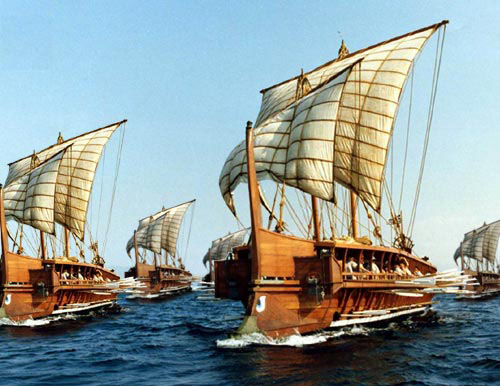5.3 The Nature of the Human Person
LEARNING OBJECTIVES
By the end of this section you will discover:
- How the question of the nature of the human person and of personal identity is not an easy one.
- What the metaphysical options are for understanding human nature.
Consider this classic puzzle first posed by the ancient philosopher Plutarch:
The ship wherein Theseus and the youth of Athens returned from Crete had thirty oars, and was preserved by the Athenians down even to the time of Demetrius Phalereus, for they took away the old planks as they decayed, putting in new and stronger timber in their places, insomuch that this ship became a standing example among the philosophers, for the logical question of things that grow; one side holding that the ship remained the same, and the other contending that it was not the same.
— Plutarch

Plutarch thus questions whether the ship would remain the same if it were entirely replaced, piece by piece. Centuries later, the philosopher Thomas Hobbes introduced a further puzzle, wondering what would happen if the original planks were gathered up after they were replaced, and then used to build a second ship. Hobbes asked which ship, if either, would be the original ship of Theseus.
Clearly, the puzzle applies to us as well! Given the possibilities described in the previous section, we must ask “what makes up the human person?” Is the human person one kind of thing or a combination of two kinds of realities? Most of us have grown up to believe that we are made up of two separate components: an ideal “mind” and a material “body” that interact with each other throughout our lives.
Personal Identity: Crash Course Philosophy #19
As with the broader question of the nature of all reality, the metaphysical possibilities for what constitutes the nature of human reality seem to be three:
THE HUMAN BEING IS MADE OF:
| ONE SUBSTANCE | TWO SUBSTANCES |
| PHYSICALISM: what constitutes “me” is really only a physical body, the brain being the center of personality | DUALISM: what constitutes “me” are really two substances, the physical body/brain and the mind; these interact with each other. |
| IDEALISM: what constitutes “me” is really only pure thought; I am a mind, body is just a mental formation of mind |
Personhood: Crash Course Philosophy #21
Works Cited
Campana, Maître des Cassoni. “Theseus and the Minotaur.” Wikimedia Commons, 1500, https://commons.wikimedia.org/wiki/File:Maître_des_Cassoni_Campana_-_Thésée_et_le_Minotaure_-_1500-1525.jpg. Accessed 17 May 2022.
CrashCourse. Personal Identity: Crash Course Philosophy #19. YouTube, YouTube, 27 June 2016, https://youtu.be/trqDnLNRuSc. Accessed 12 Apr. 2022.
CrashCourse. Personhood: Crash Course Philosophy #21. YouTube, YouTube, 25 July 2016, https://youtu.be/GxM9BZeRrUI. Accessed 12 Apr. 2022.

